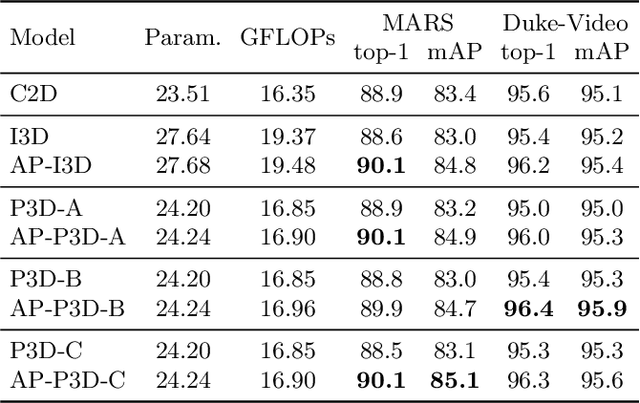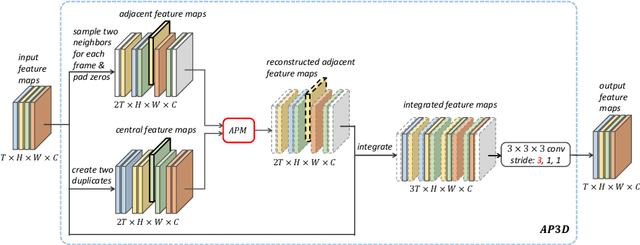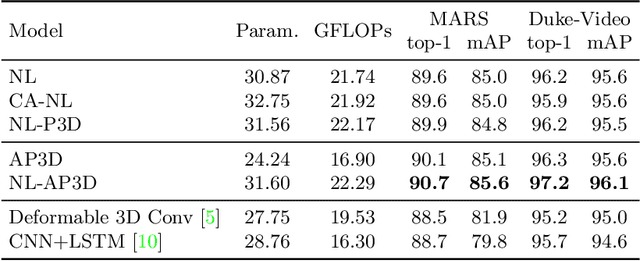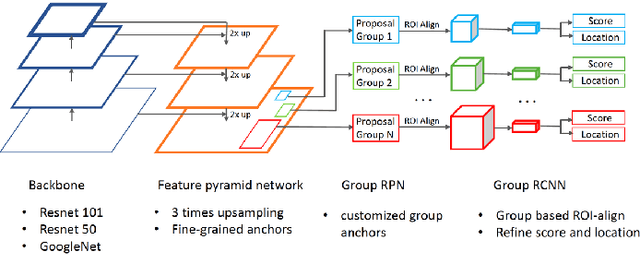Hongkai Zhang
1st Place Solutions of Waymo Open Dataset Challenge 2020 -- 2D Object Detection Track
Aug 04, 2020Abstract:In this technical report, we present our solutions of Waymo Open Dataset (WOD) Challenge 2020 - 2D Object Track. We adopt FPN as our basic framework. Cascade RCNN, stacked PAFPN Neck and Double-Head are used for performance improvements. In order to handle the small object detection problem in WOD, we use very large image scales for both training and testing. Using our methods, our team RW-TSDet achieved the 1st place in the 2D Object Detection Track.
Appearance-Preserving 3D Convolution for Video-based Person Re-identification
Jul 27, 2020



Abstract:Due to the imperfect person detection results and posture changes, temporal appearance misalignment is unavoidable in video-based person re-identification (ReID). In this case, 3D convolution may destroy the appearance representation of person video clips, thus it is harmful to ReID. To address this problem, we propose AppearancePreserving 3D Convolution (AP3D), which is composed of two components: an Appearance-Preserving Module (APM) and a 3D convolution kernel. With APM aligning the adjacent feature maps in pixel level, the following 3D convolution can model temporal information on the premise of maintaining the appearance representation quality. It is easy to combine AP3D with existing 3D ConvNets by simply replacing the original 3D convolution kernels with AP3Ds. Extensive experiments demonstrate the effectiveness of AP3D for video-based ReID and the results on three widely used datasets surpass the state-of-the-arts. Code is available at: https://github.com/guxinqian/AP3D.
Dynamic R-CNN: Towards High Quality Object Detection via Dynamic Training
Apr 13, 2020



Abstract:Although two-stage object detectors have continuously advanced the state-of-the-art performance in recent years, the training process itself is far from crystal. In this work, we first point out the inconsistency problem between the fixed network settings and the dynamic training procedure, which greatly affects the performance. For example, the fixed label assignment strategy and regression loss function cannot fit the distribution change of proposals and thus are harmful to training high quality detectors. Consequently, we propose Dynamic R-CNN to adjust the label assignment criteria (IoU threshold) and the shape of regression loss function (parameters of SmoothL1 Loss) automatically based on the statistics of proposals during training. This dynamic design makes better use of the training samples and pushes the detector to fit more high quality samples. Specifically, our method improves upon ResNet-50-FPN baseline with 1.9% AP and 5.5% AP$_{90}$ on the MS COCO dataset with no extra overhead. Codes and models are available at https://github.com/hkzhang95/DynamicRCNN.
Cascade RetinaNet: Maintaining Consistency for Single-Stage Object Detection
Jul 16, 2019



Abstract:Recent researches attempt to improve the detection performance by adopting the idea of cascade for single-stage detectors. In this paper, we analyze and discover that inconsistency is the major factor limiting the performance. The refined anchors are associated with the feature extracted from the previous location and the classifier is confused by misaligned classification and localization. Further, we point out two main designing rules for the cascade manner: improving consistency between classification confidence and localization performance, and maintaining feature consistency between different stages. A multistage object detector named Cas-RetinaNet, is then proposed for reducing the misalignments. It consists of sequential stages trained with increasing IoU thresholds for improving the correlation, and a novel Feature Consistency Module for mitigating the feature inconsistency. Experiments show that our proposed Cas-RetinaNet achieves stable performance gains across different models and input scales. Specifically, our method improves RetinaNet from 39.1 AP to 41.1 AP on the challenging MS COCO dataset without any bells or whistles.
WIDER Face and Pedestrian Challenge 2018: Methods and Results
Feb 19, 2019



Abstract:This paper presents a review of the 2018 WIDER Challenge on Face and Pedestrian. The challenge focuses on the problem of precise localization of human faces and bodies, and accurate association of identities. It comprises of three tracks: (i) WIDER Face which aims at soliciting new approaches to advance the state-of-the-art in face detection, (ii) WIDER Pedestrian which aims to find effective and efficient approaches to address the problem of pedestrian detection in unconstrained environments, and (iii) WIDER Person Search which presents an exciting challenge of searching persons across 192 movies. In total, 73 teams made valid submissions to the challenge tracks. We summarize the winning solutions for all three tracks. and present discussions on open problems and potential research directions in these topics.
 Add to Chrome
Add to Chrome Add to Firefox
Add to Firefox Add to Edge
Add to Edge